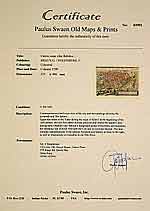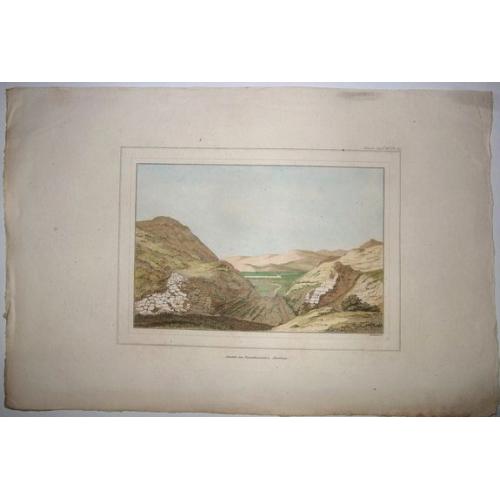Subscribe to be notified if similar examples become available.
Athens,- ANSICHT DES PANATHENAISCHEN STADIUMS. |
||||||||||||||||||||
|
||||||||||||||||||||
|
|
||||||||||||||||||||
Estimated value: $130 - $190 |
||||||||||||||||||||
Description
The Panathenaic Stadium or Kallimarmaro , lit. "beautiful marble") is a multi-purpose stadium in Athens, Greece. One of the main historic attractions of Athens, it is the only stadium in the world built entirely of marble.
A stadium was built on the site of a simple racecourse by the Athenian statesman Lykourgos (Lycurgus) ca?330 BC, primarily for the Panathenaic Games. It was rebuilt in marble by Herodes Atticus, an Athenian Roman senator, by 144 AD and had a capacity of 50,000 seats.
After the rise of Christianity in the 4th century it was largely abandoned. The stadium was excavated in 1869 and hosted the Zappas Olympics in 1870 and 1875. After being refurbished, it hosted the opening and closing ceremonies of the first modern Olympics in 1896, and was the venue for 4 of the 9 contested sports.
It was used for various purposes in the 20th century and was once again used as an Olympic venue in 2004. It is the finishing point for the annual Athens Classic Marathon. It is also the last venue in Greece from where the Olympic flame handover ceremony to the host nation takes place.
James Stuart and Nicholas Revett, are best known for their central role in pioneering Neoclassicism, and were British architects who traveled in Greece from 1751 to 1754 to record and measure the ancient ruins, particularly those of the Acropolis in Athens.
They published their findings in 'The Antiquities of Athens', the first volume of which appeared in 1762. In England, Revett and Stuart prepared their work for publication and found subscribers for 'The Antiquities of Athens'. The project was intended to consist of four volumes, although a supplementary volume also appeared. The illustrations include 368 etched and engraved plates, plans, and maps drawn at scale.
Although their French rival Julien-David Le Roy published his book about ancient Greek monuments 'Les Ruines des plus beaux bâtiments de la Grèce' before 'The Antiquities of Athens', the accuracy of Revett and Stuart's work gives their survey a claim to be the first of its kind in studies of ancient Greece; for example, Revett and Stuart were the first Europeans to describe the existence of ancient Greek polychromy.
The first volume, in which the authors are described as "painters and architects", appeared in 1762/3. Revett gave up his interest in the project after the first volume, but Stuart continued to be involved until his death in 1788. The fourth volume appeared in 1816, the year the Elgin Marbles were acquired by the British government.
FAQ - Guarantee - Shipping
Buying in the BuyNow Gallery
This item is available for immediate purchase when a "Add to Cart" or "Inquire Now" button is shown.
Payments are accepted in Euros or US Dollars. We accept most major credit cards, PayPal and bank transfer.
Authenticity Guarantee
 We provide professional descriptions, condition report and HiBCoR rating (based on 45 years experience in the map business)
We provide professional descriptions, condition report and HiBCoR rating (based on 45 years experience in the map business)
We fully guarantee the authenticity of items we sell. We provide a certificate of authenticity for each purchased item.
Condition / Coloring
We indicate the condition of each item and use our unnique HiBCoR grading system in which four key items determine a map's value: Historical Importance, Beauty, Condition/Coloring and Rarity.
We offer many maps in their original black and white condition. We do not systematically color-up maps to make them more sellable to the general public or buyer.
Copper engraved or wood block maps are always hand colored. Maps were initially colored for aesthetic reasons and to improve readability. Nowadays, it is becoming a challenge to find maps in their original colors and are therefor more valuable.
We use the following color keys in our catalog:
Original colors; mean that the colors have been applied around the time the map was issued.
Colored; If the colors are applied recently or at the end of the 20th century, then "colored", or "attractive colors" will be used.
Original o/l colors; means the map has only the borders colored at the time of publication.
Read more about coloring of maps [+]
FAQ
Please have a look for more information about buying in the BuyNow gallery.
Many answers are likely to find in the general help section.
Virtual Collection
![]()
With Virtual Collection you can collect all your favorite items in one place. It is free, and anyone can create his or her Virtual map collection.
Unless you are logged in, the item is only saved for this session. You have to be registed and logged-in if you want to save this item permanently to your Virtual Collection.
Read More [+]
If you want to save the items permanently, please sign in
or create account first. ![]()
Registering Here, it is and you do not need a credit card.
Add this item to
Virtual Collection
or click the following link to see my Virtual Collection.
Invoice
The invoice and certificates of authenticity are available in the client center >Invoices
| High-Resolution Digital Image Download | |
|
Paulus Swaen maintains an archive of most of our high-resolution rare maps, prints, posters and medieval manuscript scans. We make them freely available for download and study. Read more about free image download |
In accordance with the EU Consumer Rights Directive and habitually reside in the European Union you have the right to cancel the contract for the purchase of a lot, without giving any reason.
The cancellation period will expire 14 calendar days from the day after the date on which you or a third party (other than the carrier and indicated by you) acquires, physical possession of the lot. To exercise the right to cancel you must inform Paulus Swaen Inc, of your decision to cancel this contract by a clear statement (e.g. a letter sent by post, or e-mail (amsterdam@swaen.com).
To meet the cancellation deadline, it is sufficient for you to send your communication concerning your exercise of the right to cancel before the cancellation period has expired.
